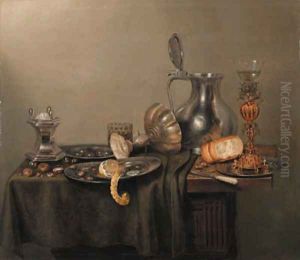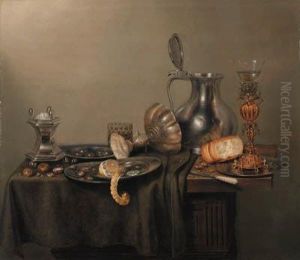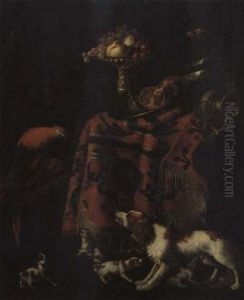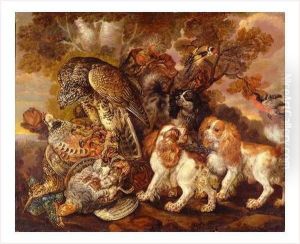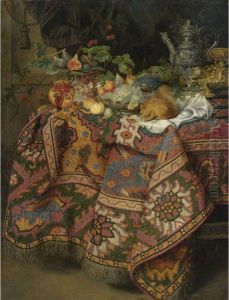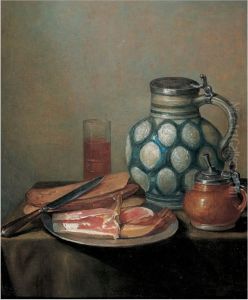Willem Gabron Paintings
Willem Gabron, born in 1619 in Antwerp, was a notable figure in the Flemish Baroque painting tradition, a movement that flourished in the Southern Netherlands during the 17th century. His works are less widely recognized today compared to those of his contemporaries, such as Peter Paul Rubens or Anthony van Dyck, yet Gabron made significant contributions to the art world of his time, particularly in the realm of still life and landscape painting.
Gabron's artistic journey began in his birth city, a vibrant cultural and economic hub in the 17th century. Antwerp was at the heart of the Baroque movement in the Low Countries, providing a fertile ground for Gabron's development. He was likely trained by local masters, absorbing the rich influences of the Flemish tradition. His paintings often reflected the typical Baroque characteristics of vivid detail, dynamic composition, and a dramatic use of light and shadow, but with a distinctive touch that set his works apart.
During his career, Willem Gabron specialized in creating intricately detailed still lifes, a genre that was immensely popular among the affluent classes of the time. These works often featured elaborate arrangements of flowers, fruits, and objects that symbolized wealth, transience, and the sensory pleasures of the world. In addition to still lifes, Gabron's oeuvre includes landscapes and genre scenes, each marked by his keen observation of nature and human life.
Despite his talent and the quality of his work, Gabron did not achieve the same level of fame as some of his peers. Records from the period indicate that he was active in Antwerp's Guild of St. Luke, an association of painters, engravers, and other artists, which suggests that he was respected within the local artistic community. However, the details of his life and career are somewhat obscured by time, leaving much about him to be rediscovered by art historians.
Willem Gabron passed away in 1678, leaving behind a body of work that continues to be appreciated for its contribution to the Flemish Baroque tradition. His paintings, though not as prolifically preserved or celebrated as those of some contemporaries, provide valuable insights into the artistic and cultural milieu of 17th-century Flanders. Today, Gabron's remaining works are studied for their aesthetic qualities and as historical documents of their era, offering glimpses into the complexities of Baroque art in the Low Countries.
